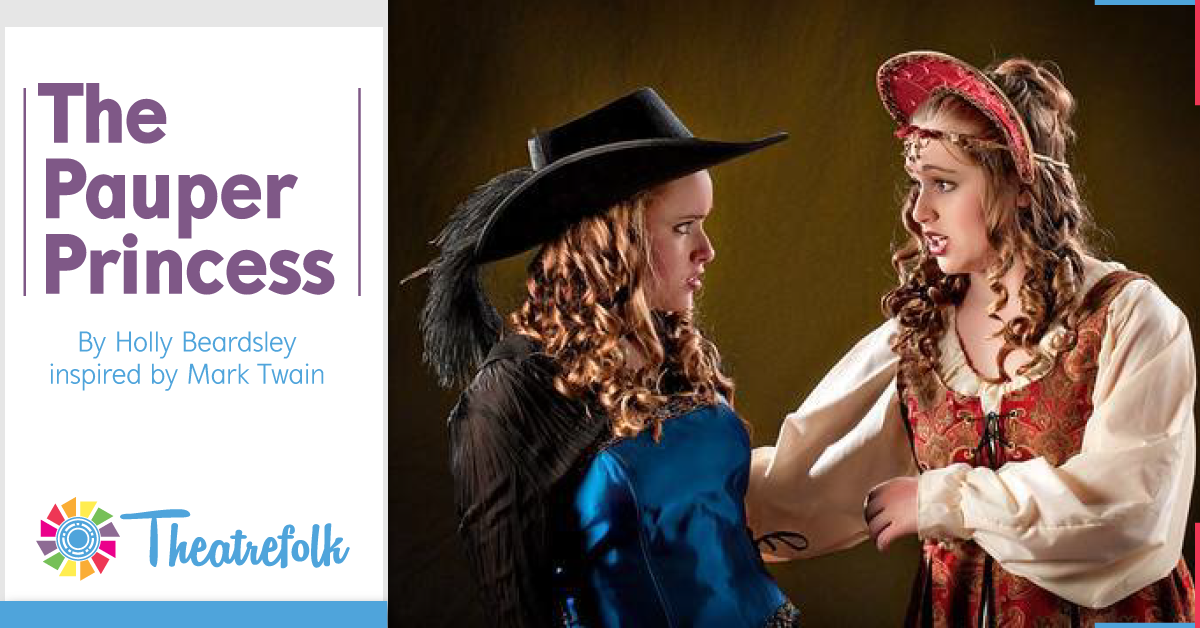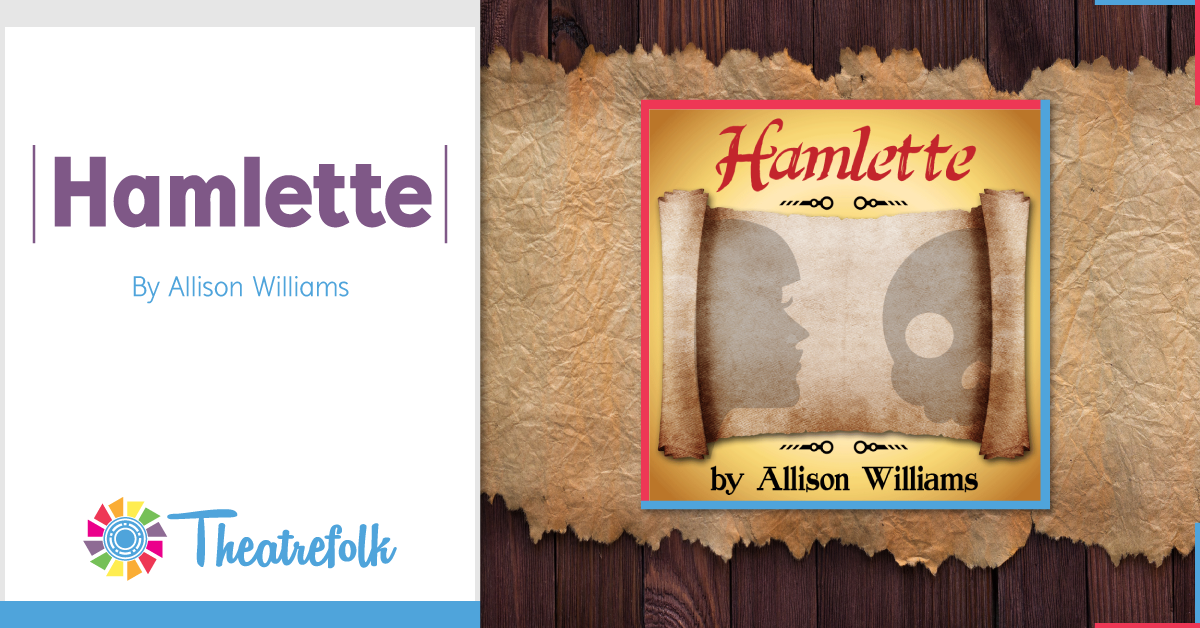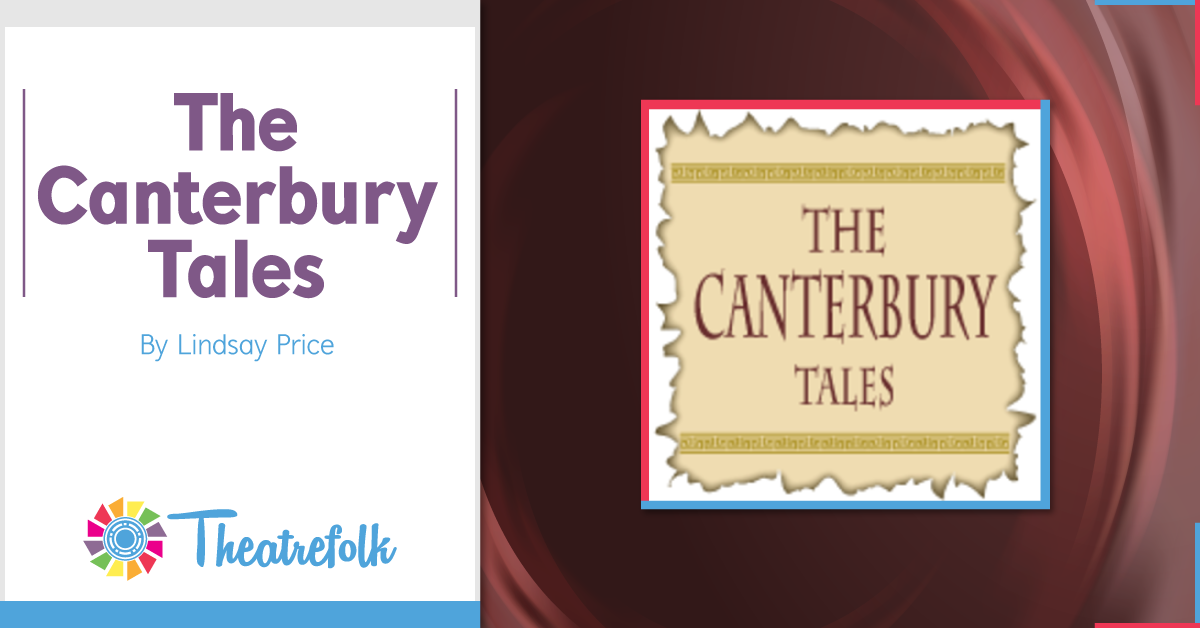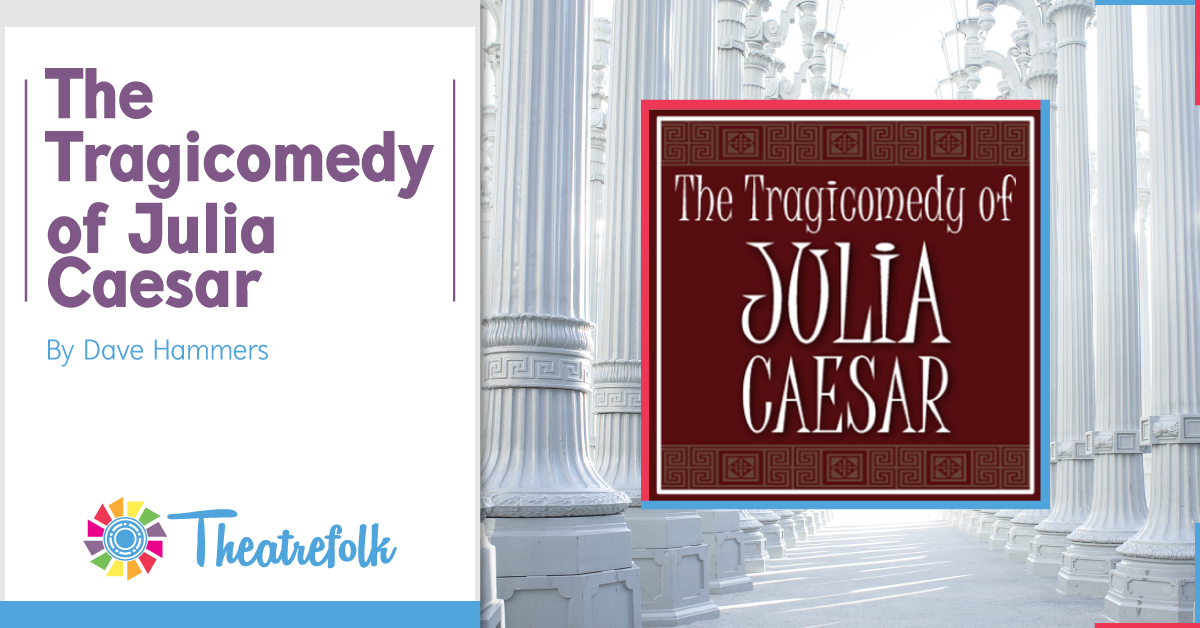Theatrefolk Featured Play – The Pauper Princess by Holly Beardsley
Welcome to our Featured Play Spotlight. Get ready for an Elizabethan England like you’ve never seen before. With hilarious characters and fun costumes, it’s time to Huzzah and Par-tay with The Pauper Princess by Holly Beardsley.
It’s a classic story. Two identical-looking people from completely different backgrounds switch places. Rich swaps with poor. Poor swaps with rich.
Add a twist of Elizabethan England and you’ve got The Pauper Princess – a retelling of Mark Twain’s The Prince and the Pauper.
Before Queen Elizabeth ascended the throne, she was just Princess Elizabeth, fending off suitors too old and too fat.
Theresa wears rags and scrounges for food. She’s so desperate she pretends to be a boy so she can be in a play.
When Princess and Pauper come face-to-face, when one becomes the other, when King Henry VIII dies and everyone is vying for the Great Seal of England (and we don’t mean the sea animal) who knows what will happen? Maybe Shakespeare has a clue…
Why did we publish this play?
I loved this play from the first moment I read it. The plot is fun, the characters are hilarious and it riffs on a classic story.
- We’ve got a twisted take on the Mark Twain story *The Prince and the Pauper *– two girls instead of two guys.
- We’ve got Queen Elizabeth the First way before she ascends to the crown – a teenage girl trying to fend off old and fat suitors.
- We’ve got massive amounts of great characters – the original production had 50 middle schoolers in it.
And it may be set in Shakespeare’s England but the script is flexible and fun. Converse sneakers are not out of place. Put it all together and The Pauper Princess is full of fun characters, fun costume opportunities, and a fun story. It’s time to Huzzah! And Par-tay!
Let’s hear from the author!
1. Why did you write this play?
I was reading Mark Twain’s The Prince and the Pauper, and I suddenly realized that the two sentence blip of description of the Prince’s sister was describing Princess Elizabeth – the future Queen Elizabeth I, the practical patron saint of theatre. I knew then, the story was about her. I changed prince to princess and the rest is history (Sometimes literally. Yay, history nerds!) Plus, more parts for girls, of course. Always.
2. Describe the theme in one or two sentences.
The Pauper Princess is about adolescence, and that glimpse of potential in the awkward mess of being a teenager. Because even Queen Elizabeth was once just a teenage girl.
3. What’s the most important visual for you in this play?
A beautiful corseted gown, with a pair of converse sneakers peaking out underneath. While the length a director might go for anachronistic humor can vary, that attitude should be apart of everything, from blocking, to set, to the costumes themselves.
4. If you could give one piece of advice for those producing the play, what would it be?
Try not to be overwhelmed by the size of the cast, or its crowd scenes. While The Pauper Princess was written for a very large cast it can always be reduced by giving multiple parts to less kids.
5. Why is this play great for student performers?
This play is great for students to perform because while it is a coming of age story (at a time when students are literally coming of age) it’s also funny. Nothing cements a memory like laughter. Nothing feels better as a young actor than moving an audience to laugh out loud. They’ll be hooked. Theatre nerd for life. Just like Queen Elizabeth herself (or so I’ve read. Did I mention I was a history nerd?)



